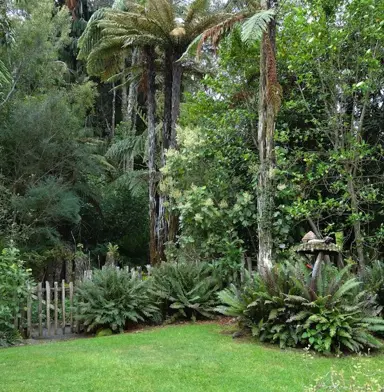
The Plant Company have the best Almond trees for sale, a fantastic range, and we can ship them to you fast! Browse our amazing range of New Zealand-grown plants to find beautiful plants for your garden.
The All-In-One Almond Tree typically reaches a mature height of 4 metres and a spread of 3 metres. Its compact, vase-shaped form makes it suitable...
Almond Garden Prince is a dwarf variety that features sweet, medium sized nuts in autumn. The flowers in spring give way to green leaves which...
Almond Monovale is a popular variety due to its high yields of small nuts with a strong flavour in autumn. White flowers are produced in spring just...
Growing almonds in your garden delivers a vast range of benefits:
From large almond trees to small ones, we’ll help you find the right sized Almond tree for your space. Our fruit trees have been selected to thrive in New Zealand’s climate. We stock only the highest quality plants, sourcing them from NZ’s leading nurseries. Each plant is packed and transported with extreme care, ensuring it arrives to you in the same condition it was in when it left the nursery. If you are wanting to buy an Almond tree, shop with confidence from the best in the industry.
Growing almonds in New Zealand is still in its early stages, but there are some areas where they are doing well, and this suggests they will do well across most of NZ.
Almond trees are relatively fast-growing. They can reach a height of 10-15 metres within 10 years.
Almond trees are relatively low-maintenance, but there are a few things you can do to ensure they thrive:
Almond trees can be grown in New Zealand. Choose a sunny spot that is shelterd and with a well-drained soil. Almond trees typically produce nuts within 3-5 years of planting. The nuts are harvested in autumn and can be eaten fresh, roasted, or used in baking and cooking.
The best almond tree to grow in New Zealand depends on your climate. However, as a general guide, Almond ‘All-in-One’ is the best option. This is a self-fertile variety of almond that is a good choice for home gardens and can be grown in almost all regions.
The fruit of almond trees is edible. The edible part of the fruit is the inner seed, which is commonly referred to as the almond nut. The fleshy part of the almond fruit is also edible, but it is not commonly eaten as it is somewhat sour, though eaten fresh, pickled, or cooked.
Almond nuts are a good source of protein, fibre, and healthy fats. They are also a good source of vitamin E and magnesium. Almond nuts can be eaten fresh, roasted, or used in baking and cooking.
It is important to note that bitter almonds are poisonous and should not be eaten. Bitter almonds contain a compound called amygdalin, which can be converted to cyanide in the body. Bitter almonds are often used to make almond oil and almond extract, but these products are safe to consume because the amygdalin is removed during the processing process.
If you are unsure whether an almond tree is producing sweet or bitter almonds, it is best to err on the side of caution and not eat the fruit.
Bitter almonds are a variety of almond that contains a naturally occurring toxin called amygdalin. Amygdalin is broken down by the body into hydrogen cyanide, which is a poisonous compound. For this reason, bitter almonds are not safe to eat raw. In fact, consuming just a handful of raw bitter almonds can be fatal.
The Latin name for bitter almonds is Prunus amygdalus. However, there are variety names for bitter almonds also:
Both names are technically correct, but Prunus dulcis var. amara is the more widely accepted and used term.
Whether or not growing almonds is easy depends on your climate, experience level, and level of commitment. Here's a few key points:
Some easier aspects of growing almonds:
Challenges of growing almonds:
The All-In-One almond tree grows to a mature height of 15-20 feet (4.5-6 metres). This makes it a relatively compact variety, compared to other varieties which can reach 30-40 feet (9-12 metres) tall. The mature wide is generally about 5-8 feet (1.5-2.4 metres). NB: the size can be controlled with pruning as required.
The lifespan of an almond tree can vary depending on several factors:
Almond trees lose their leaves in winter. This deciduous trait is a natural part of their annual cycle and helps them survive the cold weather.
There are several myths and legends associated with the almond tree, each with its own unique story and symbolism. Here are a few of the most well-known:
Greek Myth:
Roman Myth:
Portuguese Legend:
Additionally, the almond tree is often associated with the following:
The myth and symbolism of the almond tree vary across cultures and regions, but they all share a common thread of hope, resilience, and the transformative power of nature.
Almond trees are shaken for a specific reason during harvest: to dislodge the mature nuts from the branches. This process is essential for gathering the almonds efficiently and ensuring a successful harvest.
Whether you need assistance finding the plant you’re looking for or you simply want to know more about who we are and what we do, we invite you to get in touch with us today. A member of The Plant Company team will get back in touch as soon as possible.


